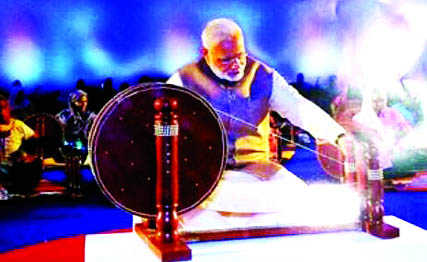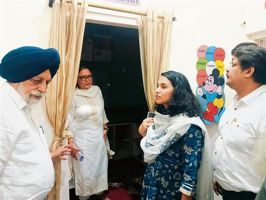
Ira Pande
We have a talent in this country for focussing on all the wrong things and in the process, completely ignoring what urgently needs to be done. A heated debate raged for days over Modi’s photograph on the KVIC calendar and the so-called hijacking of the Gandhi legacy by a pretender. If only someone had also spoken of how badly successive governments and all political parties have neglected the khadi industry! If you can, I would plead that readers see an outstanding programme that Ravish Kumar did on the pitiful condition of Gandhi Ashrams across N India. If these ashrams are still around, it is entirely due to the dedication of a handful of true Gandhians who have kept alive the Mahatma’s mission.
Even in Kumaon, in little village outlets, it is still possible to pick up wonderful hand-spun tweed, woollen rugs and blankets at absurdly cheap prices. Just as it is only in the original Gandhi Ashram in Delhi’s Regal building to really get authentic khadi and tussore silk. But nowhere in the discussions over that wretched calendar photo, did I hear anyone highlight the sins we have committed in the name of promoting khadi. Something related to this neglect is taking place in our handicraft sector as well and no one seems to care. As an Indian, I feel so proud that ours is one of the few countries where traditional skills and crafts are still produced. Among the best legacies that the Nehruvian fifties created was the pioneering work done for this sector by visionaries such as Kamaladevi Chattopadhyay, Pupul Jayakar, Rukmini Devi Arundale, the Sarabhai family and LC Jain, to name just a few. They scoured remote regions and sought out master craftspersons, promoting their work by creating retail outlets and ensuring them of an income that would free them from money-lenders and wholesalers.
The result was a wide network of retail outlets in prime locations in our metros: the Cottage Industries Emporium, Handloom House and a string of state-owned emporia with evocative names (Gurjari, Rajasthali, Lepakshi, Mrignayani, Zoon, Phulkari), where the best textiles and crafts of each state were showcased. Buyers were assured of authentic stuff and prices were fixed by reliable evaluators: in short, it was a win-win for both seller and consumer. Added to this was the promotion of these wonderful traditions by our leaders: Nehru’s generation of ministers all wore khadi and as for Indira Gandhi’s taste in saris, suffice it to say that she became a style icon for many of us just entering the sari-wearing stage. A treasured wedding gift was a pile of saris my elegant mother-in-law gifted me sourced from every emporium. It was to become my introduction to the variety of textiles our wonderful weavers produced. We have a lot to thank such men and women for they instilled a sense of pride in our heritage in a manner that no public demagoguery about ‘Make in India’ can.
In time, these splendid institutions were further boosted when the Dastkari movement led to the creation of a Dilli Haat in the heart of Delhi. The little shops that lined a wide courtyard were let out at nominal prices to those artisans who did not have access to retail outlets in their own areas. The Craft Museum also had a scheme for visiting craftspeople to work and sell in their premises.
Last week, we decided to make a visit to refresh our memories. I had not been to the Haat for a long time and looked forward to rounding off the trip with an al fresco lunch afterwards. To my huge disappointment, every vestige of what I remembered from about 10 years ago has vanished. A large part of the Dilli Haat has been taken over by the ubiquitous Kashmiri shawl-walas who sell every scrap of wool as pashmina to gullible customers.
Another chunk of the Haat has been appropriated by the wholesalers from Bhagalpur who have perfected the art of naming their ware as skilfully as a chameleon to suit the state they supposedly come from. I found one fraudster selling suspiciously shiny silk, claiming to be the work of a Shivani Hatkargha Mahila Udyog, Uttarakhand. Intrigued to find my mother’s name on an Uttarakhandi NGO, I went across. Turns out he was a wholesaler from Bihar, who had conveniently adopted this name to facilitate his entry into this space!
Everywhere I looked, there was rubbish being sold as hand-crafted and hand-woven stuff. It seems the Textile Ministry and Delhi Tourism, which are supposed to run the place, have withdrawn any kind of regulatory checks, leaving the field wide open to charlatans of every hue. Dilli Haat is now a cross between the kitsch of Janpath married to the export surplus of Lajpat Nagar. And this is where the road first built by the pioneers named above has wound up: in a desert of dead arts.
Will someone please wake up before the Chinese take over what is left of them?



























